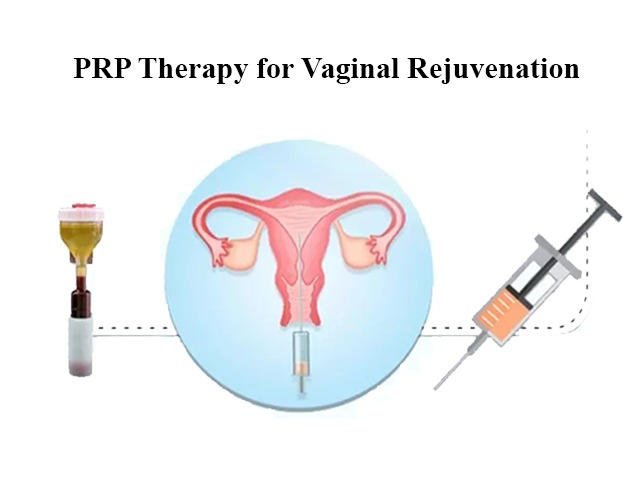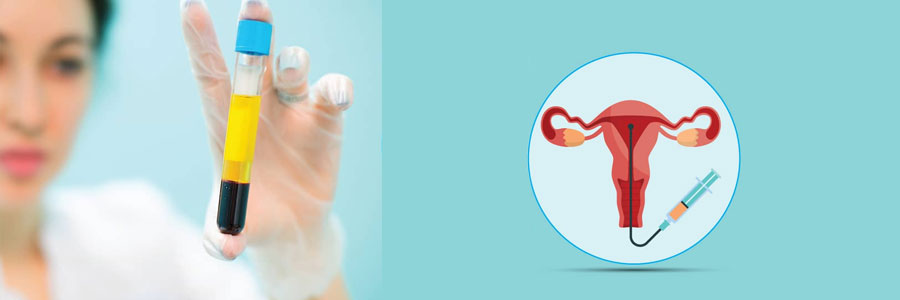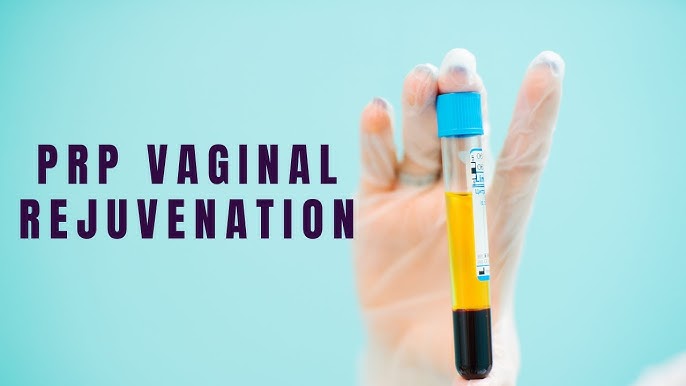Vaginal PRP and Female Sexual Dysfunction (FSD) is a complex and multifaceted challenge that, according to statistics, affects a significant percentage of women at some point in their lives. This problem, often endured in silence, can range from decreased libido and vaginal dryness to an inability to achieve orgasm, directly impacting an individual’s quality of life, self-confidence, and intimate relationships. For years, therapeutic approaches focused mainly on psychological or hormonal aspects, but today, Regenerative Medicine has opened a new horizon.
One of the most modern and promising of these methods is the use of Platelet-Rich Plasma (PRP), also referred to as Vaginal PRP or Vaginal Rejuvenation with PRP. This advanced therapeutic approach, relying on the healing power of the individual’s own body, helps to regenerate and revitalize the tissues of the genital area, offering a biological solution to physiological problems. In this comprehensive article, styled after reputable medical platforms, we will dissect the mechanism of action of Vaginal PRP, and detail the procedure, applications, benefits, and everything you need to know about this innovative treatment.
Reading time: 12 minutes
What is Vaginal PRP? A Detailed Explanation of the Process
Platelet-Rich Plasma is a biological product prepared entirely from the patient’s own blood. To better understand it, we must first become familiar with the components of blood. Our blood is composed of plasma (the liquid part), red blood cells, white blood cells, and platelets. Platelets (Thrombocytes) are very small cells that most people know for their role in blood clotting and preventing bleeding. But their other amazing function is to initiate the tissue repair process. Each platelet is a small warehouse of hundreds of biologically active proteins called Growth Factors.
In the vaginal PRP method, the main goal is to separate and concentrate these platelets and their growth factors to use them as a powerful regenerative medicine. The process is as follows:
- Step One: Consultation and Evaluation: Before any action is taken, the specialist physician holds a thorough consultation session to review your medical history, assess your problems, and ensure you are a suitable candidate for this treatment.
- Step Two: Blood Draw: Similar to a simple blood test, a specific amount of blood (usually between 30 to 60 cc) is drawn from a vein in your arm.
- Step Three: Centrifugation: The test tube containing your blood is placed in a centrifuge machine. This device spins at a very high speed and, based on molecular weight, separates the different components of the blood into layers: the heavier red blood cells at the bottom, platelets and white blood cells in the middle layer (called the Buffy Coat), and the lighter plasma at the top.
- Step Four: Extraction and Activation: The physician carefully extracts the platelet-rich plasma layer, which now has a concentration 3 to 7 times higher than normal. Sometimes, an activating agent like calcium chloride is used to stimulate the platelets to immediately release their growth factors.
- Step Five: Injection: After applying a strong topical numbing cream to the genital area, the physician injects the prepared plasma into strategic and key points using a very fine needle. These points usually include the anterior wall of the vagina (the location of the G-Spot) and the clitoral area to achieve maximum impact on sexual response. The entire process typically takes less than an hour.
Who is a good candidate for Vaginal PRP?

This treatment can be a very effective option for women facing a wide range of sexual function issues or changes due to aging and childbirth. Ideal candidates include:
- Women suffering from vaginal dryness: This problem is particularly common after menopause, during breastfeeding, or due to the use of certain medications. PRP significantly helps increase natural lubrication and reduce pain during intercourse (dyspareunia) by regenerating the vaginal mucosal tissue.
- Women experiencing decreased sexual desire (Low Libido): By increasing blood flow and nerve sensitivity in the genital area, PRP can help restore sensation and increase the desire for sexual activity.
- Women who have difficulty achieving orgasm (Anorgasmia): Increased sensitivity in the clitoris and G-spot area can dramatically enhance excitability, making it easier to reach orgasm and even improving its quality.
- Women with vaginal laxity after childbirth: By stimulating the production of collagen and elastin, PRP helps increase the firmness and tightness of the vaginal tissue and can enhance sexual satisfaction for both partners.
- Women suffering from mild stress urinary incontinence: Strengthening the support tissues around the urethra through PRP can help reduce or eliminate urine leakage during coughing, sneezing, or physical activity.
Who should not have Vaginal PRP? (Contraindications)
Despite its high safety profile, this procedure is not suitable for everyone. Contraindications include:
- Blood disorders: Such as low platelet count (thrombocytopenia) or platelet dysfunction syndromes.
- Active infections: The presence of any active vaginal, urinary, or systemic infection.
- Cancer: A history of or current cancer, especially in the pelvic region.
- Pregnancy and breastfeeding: Due to a lack of sufficient research in these periods.
- Use of anticoagulant medications: Which must be temporarily stopped under the supervising physician’s advice.
The Mechanism of Action of PRP: How do platelets improve sexual function?
The effectiveness of PRP is summarized in one word: regeneration. The growth factors released from platelets act like a biological engineering team, initiating several repair processes at the cellular level:
- Stimulation of Stem Cells and Fibroblasts: Growth factors act like a magnet, drawing the body’s multipotent stem cells to the injection site. These cells have the potential to transform into new tissue cells. Simultaneously, they activate fibroblasts (the cells responsible for producing collagen), leading to the creation of a new, strong collagen and elastin network. This directly results in increased thickness, firmness, and elasticity of the vaginal wall.
- New Blood Vessel Formation (Neovascularization): Factors like VEGF (Vascular Endothelial Growth Factor) stimulate the formation of new blood capillaries. A significant increase in blood flow means more oxygen and nutrients reach the tissues. This improved blood supply not only ensures overall tissue health but also enhances the physiological basis of sexual arousal (swelling of the clitoris and vagina) and improves natural lubrication.
- Nerve Repair and Sensitization: Some growth factors play a role in repairing the myelin sheath of nerves and increasing the sensitivity of nerve endings. This process can help restore sexual sensation that may have diminished due to childbirth or aging, consequently leading to stronger and more pleasurable orgasms.
Potential side effects and risks of Vaginal PRP

As mentioned earlier, high safety is one of the most prominent features of PRP. Since the injected material is from your own body, there is no risk of allergic reactions, sensitivity, or disease transmission. However, like any injection, some mild and transient side effects may occur:
- Pain and tenderness: Very mild pain at the injection site, which usually resolves within 24 to 48 hours.
- Swelling and redness: A natural inflammatory response of the body to the injection, indicating the start of the healing process, which will soon subside.
- Bruising: Some individuals may experience minor bruising at the blood draw or injection site.
- Infection: The risk of infection is extremely low if sterile principles are fully observed by the physician and initial aftercare is followed by the patient.
Pre- and Post-Injection Care and Realistic Expectations
- Before the injection: For about a week prior, avoid blood-thinning and anti-inflammatory drugs (aspirin, ibuprofen, naproxen, vitamin E, and fish oil). In the days leading up to the treatment, keep your body hydrated by drinking plenty of water.
- After the injection: There is virtually no recovery period. However, it is recommended to abstain from sexual intercourse, hot tubs, saunas, and strenuous physical activities for 3 to 4 days so as not to disrupt the initial regeneration process.
- Expectations: It is important to have realistic expectations. PRP is a biological process, and its results are not immediate. Some individuals may feel improvement within the first few weeks, but the final results and the peak of the tissue regeneration process usually manifest after 2 to 3 months and can last for 18 months or more.
Conclusion
Vaginal PRP, beyond being a cosmetic procedure, is an intelligent regenerative treatment that harnesses the therapeutic potential of the individual’s own body to address sexual function problems. This safe, minimally invasive, and effective method offers a promising solution for women seeking to improve their sexual quality of life and regain their self-confidence by enhancing the physiology of the genital area through increased blood flow, tissue regeneration, and nerve sensitization. Choosing a specialized, experienced, and reputable physician is the key to achieving the best and safest results from this advanced treatment.
Sexual health is a vital part of your overall health and quality of life. For a specialized consultation on modern methods for improving sexual function like PRP and to ensure you receive the best treatment tailored to your condition, you can contact Dr. Azarmidokht Shojaei, an OB/GYN, to book your appointment.
Frequently Asked Questions (FAQ)
- Is the Vaginal PRP injection painful?
No. A strong topical numbing cream is used on the target area before the injection. Therefore, most people experience very little to no pain during the injection.
- How long do the results of Vaginal PRP last?
The longevity of the results varies from person to person depending on factors like age, health status, and lifestyle, but on average, they last between 12 to 18 months. After this period, the injection can be repeated to maintain the results.
- How many PRP sessions are needed to see results?
Many women see significant improvement after just one session. However, depending on the severity of the issue and the body’s response, the physician might recommend a repeat injection after a few months or a treatment protocol involving 2 to 3 sessions at specific intervals.
- How does PRP differ from lubricants or hormone therapy?
Lubricant gels are a temporary, superficial solution for vaginal dryness. Hormone therapy is a systemic treatment that affects the entire body and may not be suitable for everyone. In contrast, PRP is a regenerative and local treatment that addresses the root cause of issues like dryness and decreased sensation by repairing the tissue itself.
- Are the results of PRP guaranteed?
In medicine, no treatment has a 100% guaranteed result. The effectiveness of PRP depends on each individual’s biological response. However, studies and clinical experience show a very high satisfaction rate (typically above 80%) among properly selected patients.

